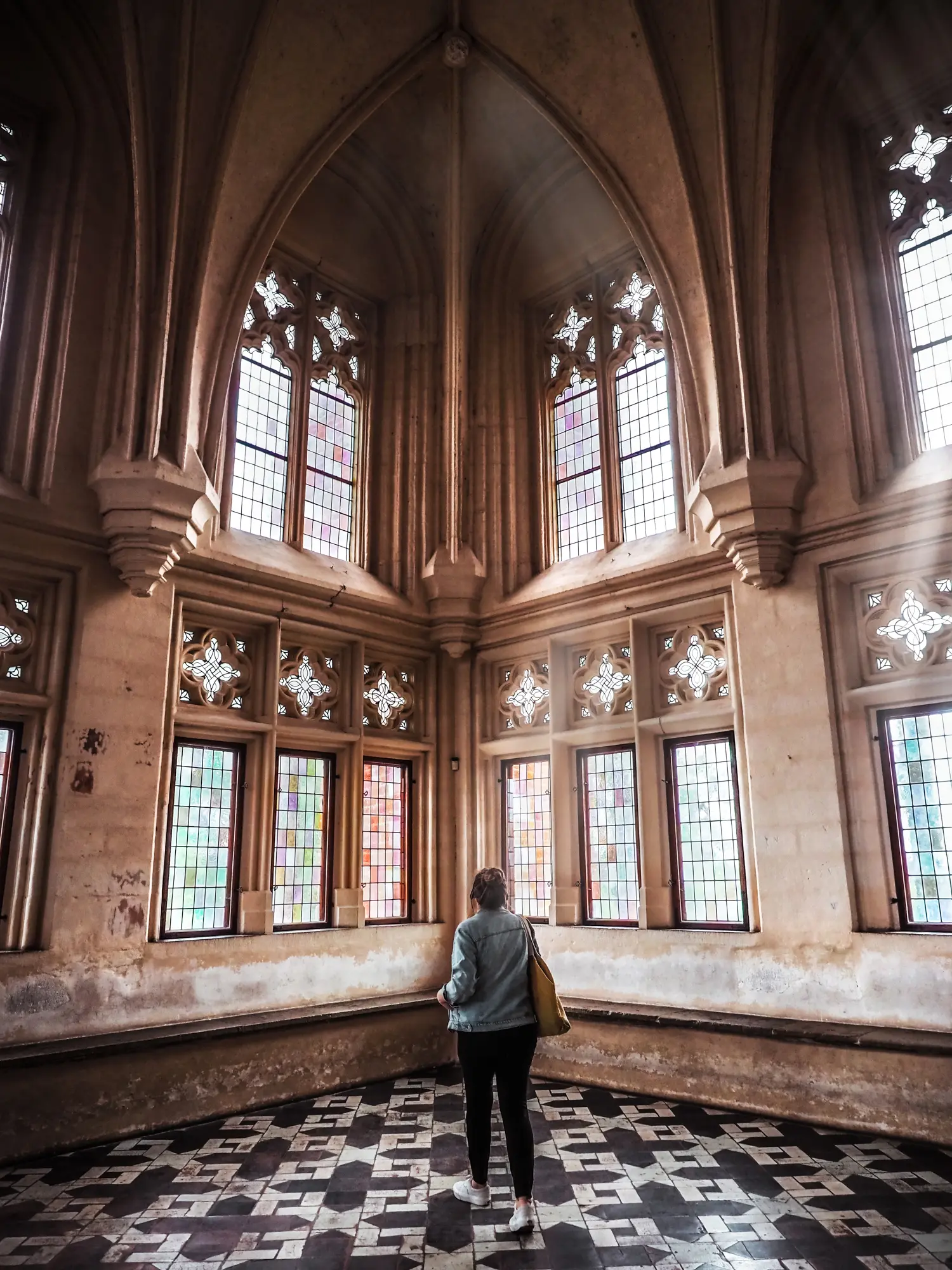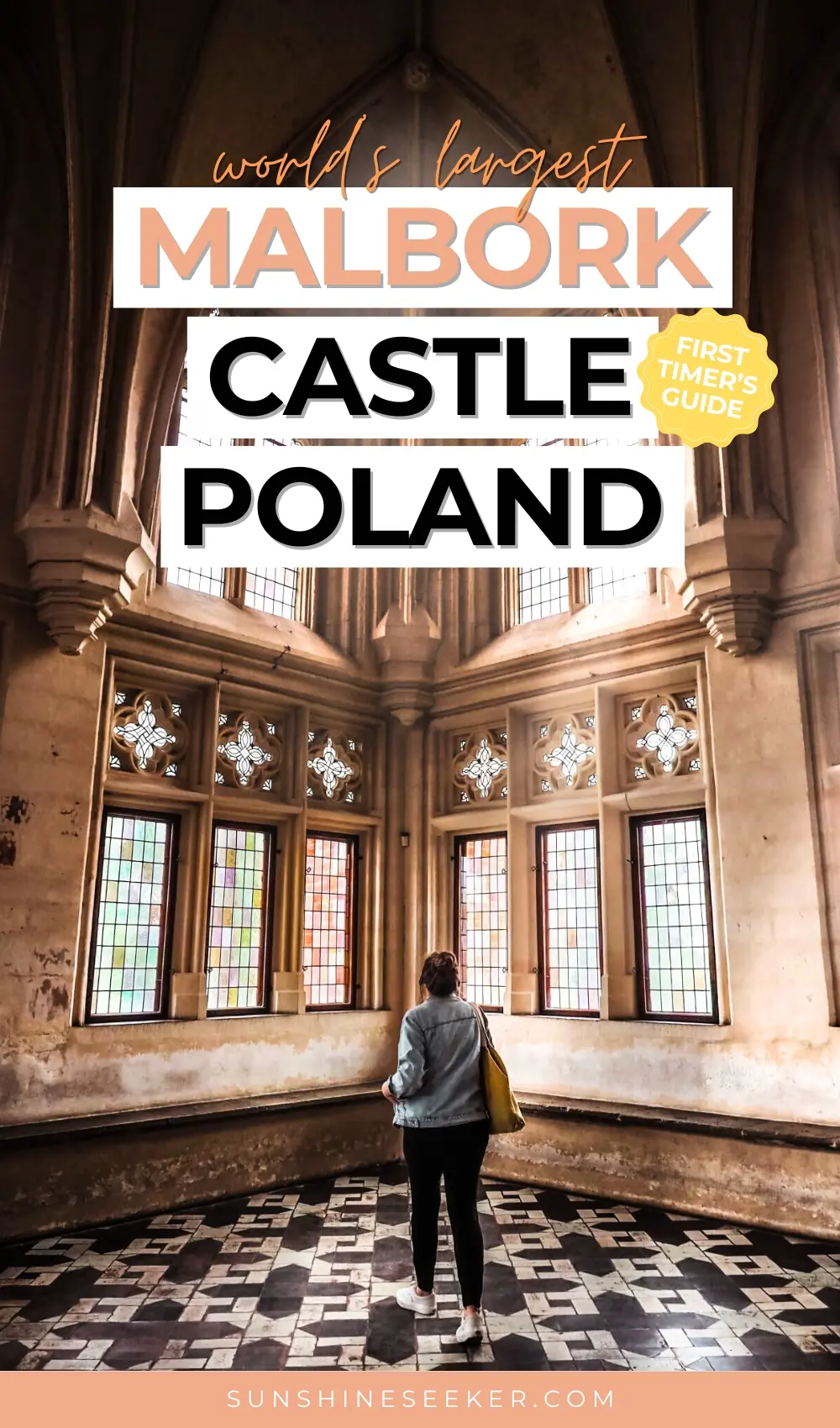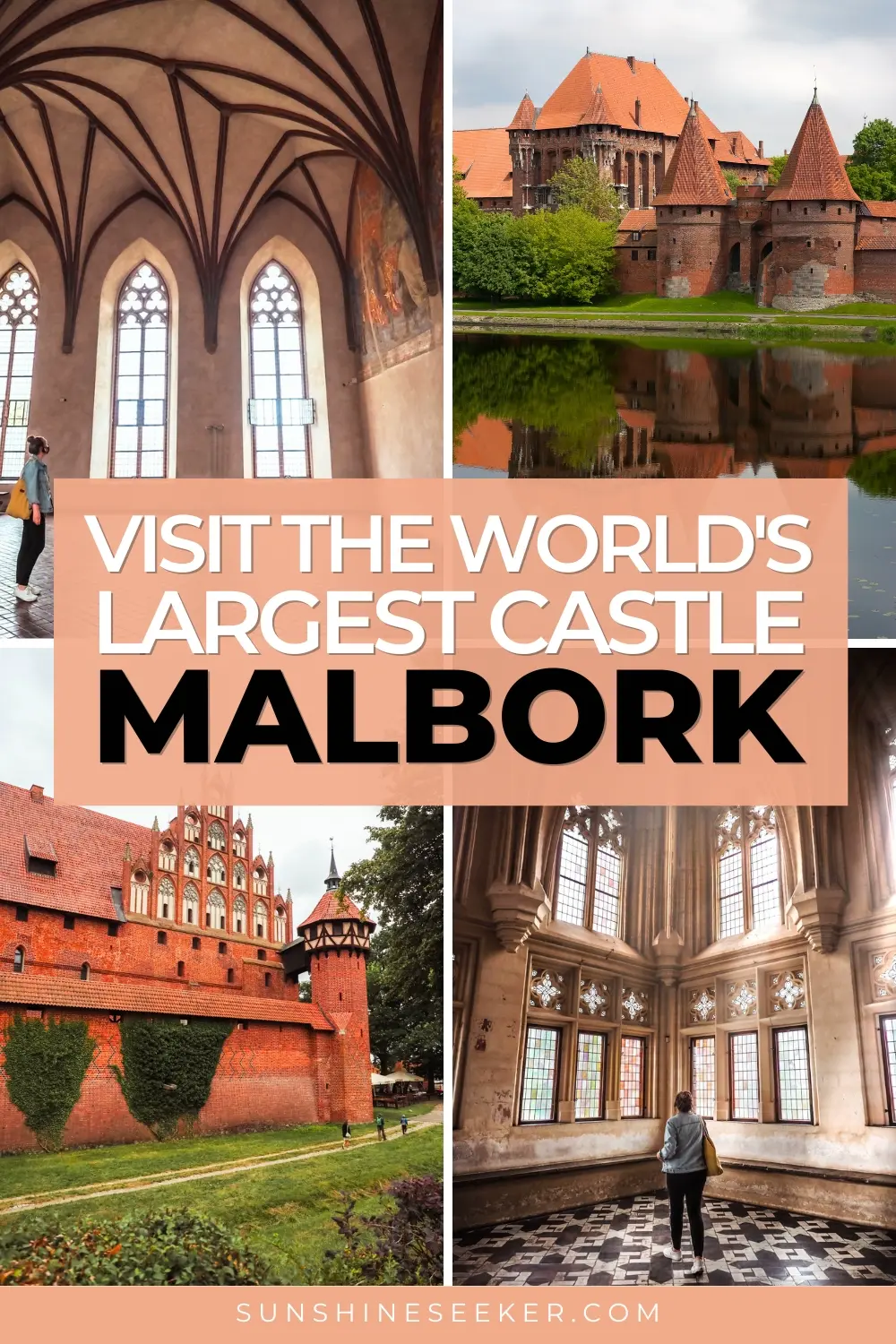Visiting Malbork Castle is like traveling back in time, more so than other castles because of its sheer scale. You literally feel like you’re stepping into a Medieval town.
It was built by knights of the Teutonic Order, a German Catholic religious order of crusaders, in the 13th century. If you’ve read my blog before, you probably know that I’m a castle lover—as big as they come. So, of course, I have visited the largest castle in the world several times.
Located within easy distance of Gdansk, Malbork Castle is one of the top attractions in northern Poland. So, let’s take a quick look at how to get there, the best time to visit, and what you can expect.

Article overview
Welcome to Malbork Castle
Set on the banks of the Nogat River, Malbork Castle quickly became a key site of the Teutonic Order, serving as its headquarters for many years.
Throughout history, Malbork Castle has seen many transitions in ownership and purpose. After the decline of the Teutonic Order, it became a royal residence for Polish kings and later served various roles, including a Prussian military barracks.
During WWII, Malbork Castle was under Nazi control and in the final months of the war, particularly in early 1945, Malbork Castle was heavily damaged. Not long after, Poland regained ownership and the castle was later reconstructed and restored from the damages of war and a 1959 fire.
Today, this magnificent fortress is recognized as the world’s largest castle by land area, largest brick building and as a UNESCO World Heritage Site. The architecture is a stunning example of the Medieval Gothic style.
Malbork Castle size >> I just want to give you a better idea of the size of this fortress. Many different measurements are floating around online, but I’m pretty sure I read while I was actually there that the outer walls cover 52 acres (210 436 m2). Some online sources say 143,591 m2. But on the conservative side, it is the same as 115 Olympic-sized swimming pools.


Gdansk to Malbork Castle
You can easily visit Malbork Castle on a day trip from Gdansk. I have done it twice now, one time by train and one time we rented a car.
By train
Taking the train is the most popular and efficient way to travel from Gdansk to Malbork Castle. Trains run frequently, and the journey lasts 25 to 55 minutes, depending on the type of train.
The fastest option is PKP Intercity trains, which operate hourly and takes around 25-34 minutes with ticket prices ranging from $6-$27. If you’re looking to save a few zloty, the Regio (R) trains are the cheapest option, though they make a lot of stops. I always book trains in Poland through PolishTrains.
From the train station in Malbork, you have to walk around 15 minutes to the castle. There were no taxis outside the castle at the time of my visit, so if you don’t want to walk back to the station, check Uber or Bolt.

By car
Driving from Gdansk to Malbork is another excellent option, especially if you prefer flexibility and want to explore more areas along the way. It takes around an hour. We drove last time because I also wanted to stop by Elbląg and continue up to Rewa.
I always rent cars through DiscoverCars, a comparison site covering more than 10.000 destinations worldwide.
Instead of parking directly outside the castle, which costs 30 PLN for 3 hours, we drove across the river and parked close to the pedestrian bridge. I can’t remember exactly what we paid here, but it was cheaper.
Book a guided tour
🌟 My top pick >> If you’re a history buff like me, I recommend this day trip to Malbork Castle and Westerplatte from Gdansk. You get skip-the-line tickets to Malbork, and you can explore the castle at your own pace with an audio guide.
If you prefer a human guide >> Book this half-day trip from Gdansk with an English-speaking driver and an English guide. Hotel pick-up and drop-off are included in the price. You leave early in the morning to beat the crowds, and that means you still have the afternoon and evening to enjoy in Gdansk.

Plan your visit
You can visit Malbork Castle all year round, but the opening hours change with the seasons.
Malbork Castle tickets
Prices differ depending on your route, but the main Malbork Castle tickets cost 80 PLN for normal tickets and 60 PLN for reduced tickets.
Historical Castle Route: Tour the entire castle in around 3.5 hours, including parts of the Castle Grounds Route. Polish guides (leaving every 30 minutes) or an audioguide (available in many languages) are mandatory and included in the price. The tour begins at the Plac 60-lecia MZM near the ticket counters.
Castle Grounds Route: Includes part of the Outer Bailey, gate passages, courtyards of the Middle and High Castle, the chapel of St. Anne, terraces with the garden of the great masters, moat and Zwinger. It takes around 1.5 hours because it does not include the interiors. The normal ticket price is 35 PLN.
Castle Monastery Route: Tour the high castle, the oldest part of the castle complex. It takes around 2 hours and focuses on the story of the life of the Teutonic Order brothers in the convent. Normal tickets cost 70 PLN.
Is Malbork Castle free? Yes, on Mondays visiting Malbork is free, though only the Castle Grounds Route is available. You still have to get the free ticket from the ticket office.

Opening hours
From late April to late September, Malbork Castle is open daily from 9:00 am to 8:00 pm. It’s a good idea to arrive either early in the morning or later in the afternoon to avoid the busiest times.
Ticket offices are open daily from 8:30 am to 6:30 pm.
During the winter season, Malbork Castle is open from 9:00 am to 1:00 pm.
Is Malbork Castle accessible?
Yes, parts of Malbork Castle have been made accessible for people with mobility issues, including the ticket office, the grounds, toilets and parts of the interior. However, some of the older parts, including the Museum are in narrow Medieval buildings where improvements can not be made.
And all the cobblestone surfaces are very inconvenient for people in wheelchairs, so I think a person who can push would be very helpful.


What to expect at Malbork Castle
I have been to Malbork Castle in June and August, both times it was very busy. I found it very annoying at first to walk in lines through the hallways, but after a while, I was able to block it out and enjoy the tour. If you can, get there right as the castle opens at 9:00 am.
Normally I’m not a fan of audio guides, but I actually learned a lot here. And it helped reduce the noise. We spent around 4 hours during our first visit (I like to take in every detail), and a little less during the last visit because the weather was not the best.
The different areas of the Castle
My favorite thing to do when visiting castles is to marvel at the gorgeous interiors. I feel so at home, I’m convinced I used to live or work at a castle in a previous life.
The Malbork Castle complex is divided into three distinct sections: the High Castle, the Middle Castle, and the Lower Castle, each featuring a range of defensive structures, residential buildings, and chapels.

Your first stop will be the Middle Castle, housing the Grand Masters’ Palace with some truly impressive rooms such as the Grand Refectory. My favorite space in the whole castle, however, is the Summer Refectory (first photo).
In the Middle Ages, it served as an audience hall, where the grand master received their most distinguished guests. The Middle Castle is the most crowded section of the tour, but it is worth it.
From the middle castle, a drawbridge leads under a portcullis (am I the only one who is always afraid it will fall down when walking under?) into the smaller courtyard of the high castle, the oldest part.
The High Castle, enclosed by towering walls, housed the knights and their grand chapel (the Church of the Virgin Mary) and other monastic rooms. The Lower Castle is where the stables, workshops, and the castle museum are located.


📸 Pro tip >> The best view of Malbork Castle is from the other side of the river, exit the grounds and cross the pedestrian bridge.
Another viewpoint not to be missed is from the Tower (Wiezna Glowna). On the second floor of the high castle, it is easily missed because it is not mentioned in the audio guide. You will have to purchase a separate ticket for just a few zloty.

The Castle Chapel has been part of Malbork Castle since the first phase of construction at the end of the 13th century. When the capital of the state was moved to Malbork in 1309, the stronghold’s significance increased. As a result, the chapel, which initially occupied only half of the northern wing, was expanded.


In the eastern wing of the Middle Castle, you’ll find a cloister and passage featuring seven pointed recesses. Between the windows that overlook the courtyard, these recesses display paintings depicting scenes from the Apocalypse of St. John.
These artworks illustrate the future history of the world and the ultimate triumph of the Church through seven distinct visions.
A unique architectural feature is the Dansker, basically a toilet tower first developed at Malbork and subsequently copied at other castles within the monastic state.
The tower is connected to the main castle by a covered walkway, ensuring accessibility while maintaining the castle’s defensive integrity. It also has an arch at the bottom, allowing for water to wash the waste away. Oh, how lovely the smell must have been.


I’m pretty sure this is details on the ceiling in a bedroom interpreted as a bedroom of great masters. Only the orange and green have survived, but in the Middle Ages, there would have been more colors.
Amenities
There are restrooms throughout the Malbork Castle grounds and a restaurant in the Middle Castle called Gothic Café and Restaurant. Set in the cellar under the commemorative relief of Copernicus in the main courtyard, you can feast on hearty dishes created by an internationally acclaimed chef.
You can also bring food to enjoy on one of the many benches in the main courtyard as we did. The gift shop is a treasure trove of Malbork souvenirs, from knight-themed memorabilia to local crafts.

Final thoughts: Is Malbork Castle worth visiting?
Yes, Malbork Castle is definitely worth visiting. So much so that I have been there twice now, and had just as much fun both times. The second time I noticed even more spaces and details I previously missed.
It’s not hard to see why UNESCO granted it the title of a World Heritage Site back in 1997. In my mind, it is one of the top three must-see castles in Poland.
You can easily spend 4 hours here and still have plenty of time to explore Gdansk or other cities nearby such as Malbork – with its town hall, city gates, churches and striking water tower.










Leave a Reply